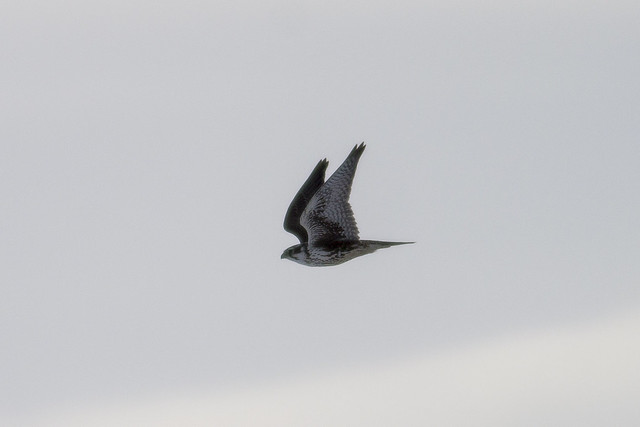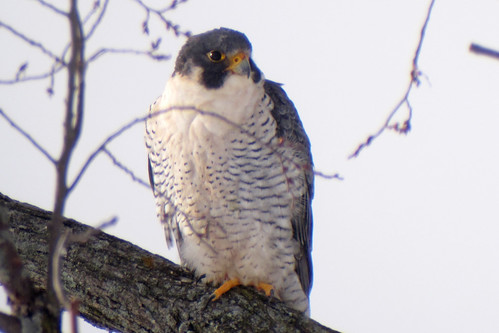 |
| Looking for Short-eared Owls at dusk |
- 4 Snowy Owls, including one owl dive-bombing another in flight!
- Short-eared Owls hunting in the distance at dusk.
- A Red-headed Woodpecker in a residential area of Ipswich.
- Pacific Loon off the coast at Plum Island.
- A Eurasian Wigeon in Black Rock Creek at Salisbury Beach State Reservation.
- Black Guillimot close to shore in Gloucester.
- Calm weather at Andrew's Point, with Harlequin Ducks close to shore.
In the Superbowl of Birding, each species is assigned a point-value based on how easy or difficult it is to find. Easy birds like chickadees are worth 1 point, and hard birds like Dovekie are worth 5. Even some of the 1-point birds are absent from Vermont, so we enjoyed both the common birds as well as the rare. Our total of 69 species and 128 points broke our previous record, setting a new personal best. The complete checklist from the trip is shown below:
1 point (plain text)
2 points (bold)
3 POINTS (BOLD, CAPS)
4 POINTS (BOLD, CAPS, ITALICS)
5 POINTS (BOLD, CAPS, ITALICS, UNDERLINED)
| Canada Goose | Northern Gannet | NORTHERN FLICKER |
| Gadwall | Great Cormorant | Blue Jay |
| EURASIAN WIGEON | Bald Eagle | American Crow |
| AMERICAN WIGEON | Northern Harrier | COMMON RAVEN |
| American Black Duck | COOPER'S HAWK | Horned Lark |
| Mallard | Red-tailed Hawk | Black-capped Chickadee |
| RING-NECKED DUCK | ROUGH-LEGGED HAWK | Tufted Titmouse |
| Greater Scaup | SANDERLING | White-breasted Nuthatch |
| Common Eider | Purple Sandpiper | Carolina Wren |
| Harlequin Duck | Ring-billed Gull | American Robin |
| Surf Scoter | Herring Gull | Northern Mockingbird |
| White-winged Scoter | Iceland Gull | European Starling |
| Black Scoter | GLAUCOUS GULL | LAPLAND LONGSPUR |
| Long-tailed Duck | Great Black-backed Gull | SNOW BUNTING |
| Bufflehead | RAZORBILL | American Tree Sparrow |
| Common Goldeneye | Black Guillemot | SAVANNAH SPARROW |
| Hooded Merganser | Rock Pigeon | Song Sparrow |
| Common Merganser | Mourning Dove | White-throated Sparrow |
| Red-breasted Merganser | SNOWY OWL | Dark-eyed Junco |
| RUDDY DUCK | SHORT-EARED OWL | Northern Cardinal |
| PACIFIC LOON | RED-HEADED W..DPECKER | House Finch |
| Common Loon | RED-BELLIED W..DPECKER | American Goldfinch |
| Horned Grebe | Downy Woodpecker | House Sparrow |
















